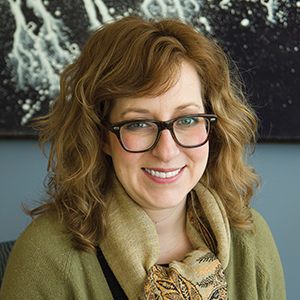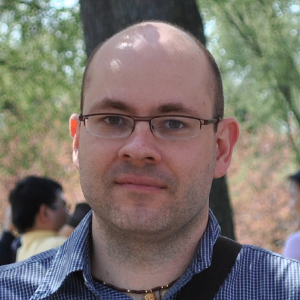Stanford's Herschlag named William C. Rose award winner
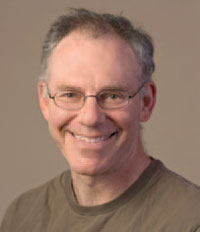 Daniel Herschlag, professor of biochemistry, chemistry and chemical engineering at Stanford University, has been awarded the 2010 American Society for Biochemistry and Molecular Biology William C. Rose Award in recognition of his outstanding contributions to biochemical and molecular biological research and a demonstrated commitment to the training of younger scientists.
Daniel Herschlag, professor of biochemistry, chemistry and chemical engineering at Stanford University, has been awarded the 2010 American Society for Biochemistry and Molecular Biology William C. Rose Award in recognition of his outstanding contributions to biochemical and molecular biological research and a demonstrated commitment to the training of younger scientists.
Herschlag will present an award lecture titled “How Enzymes Work” at 8:30 a.m. Tuesday, April 27, at the 2010 annual meeting in Anaheim, Calif.
Integrating concepts and techniques from physics, chemistry and biology, Herschlag and his lab team seek to unlock the fundamental behaviors of RNA and proteins and, in turn, how these behaviors determine and affect biological processes. Herschlag is perhaps most famous for his groundbreaking research in RNA structure, folding and catalysis, particularly his discoveries concerning the mechanisms and thermodynamics of group I and hammerhead ribozymes.
“Herschlag has set the standard for excellence in this field,” notes colleague Carol A. Fierke, chairwoman of the University of Michigan’s department of chemistry. “His studies using single-atom substitution and kinetic analysis to identify metal binding sites in ribozymes are a tour de force. Additionally, [he] provided the first direct demonstration of the role of binding interactions in chemical catalysis in ribozymes; these studies elegantly demonstrated the role of binding energy in stabilizing both ground-state and transition-state interactions.”
Of course, as Fierke and others will point out, ribozymes represent just a portion of Herschlag’s superb body of research. He is also one of the foremost experts on the mechanisms of both naturally occurring and enzyme-catalyzed phosphoryl transfer reactions and a leader in advancing research into RNA chaperones. He has provided tremendous insight into the general nature and evolution of enzyme catalysis.
In this latter area, Herschlag is well known for identifying the implications of a property he termed “catalytic promiscuity”— in which proteins in the same superfamily often display low levels of activity toward reactions catalyzed by other members within the superfamily— for the evolution and design of new enzymes.
In addition to his scientific contributions in the fields of RNA, enzymes and RNA enzymes, Herschlag also has demonstrated an equal level of commitment to training younger scientists. Says Rick Russell, associate professor of chemistry and biochemistry at the University of Texas and former postdoctoral fellow in Herschlag’s lab, “Dan has been committed to doing everything necessary to mentor his group members at the highest possible level in all aspects of training, from designing and interpreting the experiments to preparing the presentation.”
“I am continually amazed at how willing Dan is to donate his time to provide guidance, and I am amazed at how effective his guidance is across this wide range of scientific areas,” Russell continued. “I know of no other scientist who is so willing and eager to assist students in this way.”
Herschlag received his undergraduate degree in biochemistry from the State University of New York at Binghamton in 1982, during which time he also co-edited the campus literary magazine.
After a year of conducting research into the enzymology of glycopeptide synthesis with John Gander at the University of Minnesota (and learning a little quantum mechanics on the side), Herschlag began his graduate studies at Brandeis University. There, he began looking into phosphoryl transfer reactions under the direction of William Jencks.
After receiving his doctoral degree in 1988, Herschlag did postdoctoral research at the University of Colorado at Boulder under Thomas Cech, where he got his first taste of the recently discovered RNA enzymes. He then went on to join the Stanford University biochemistry department in 1993, where he has remained ever since.
Enjoy reading ASBMB Today?
Become a member to receive the print edition four times a year and the digital edition monthly.
Learn moreGet the latest from ASBMB Today
Enter your email address, and we’ll send you a weekly email with recent articles, interviews and more.
Latest in People
People highlights or most popular articles

Mydy named Purdue assistant professor
Her lab will focus on protein structure and function, enzyme mechanisms and plant natural product biosynthesis, working to characterize and engineer plant natural products for therapeutic and agricultural applications.
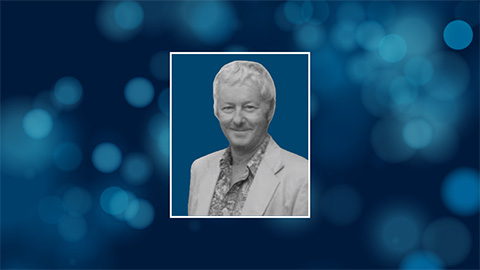
In memoriam: Michael J. Chamberlin
He discovered RNA polymerase and was an ASBMB member for nearly 60 years.

Building the blueprint to block HIV
Wesley Sundquist will present his work on the HIV capsid and revolutionary drug, Lenacapavir, at the ASBMB Annual Meeting, March 7–10, in Maryland.

In memoriam: Alan G. Goodridge
He made pioneering discoveries on lipid metabolism and was an ASBMB member since 1971.
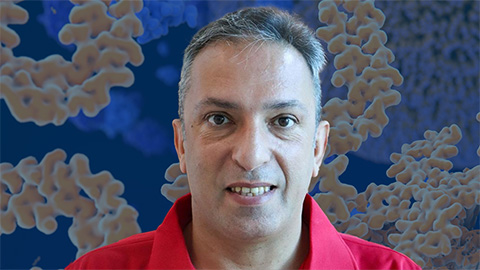
Alrubaye wins research and teaching awards
He was honored at the NACTA 2025 conference for the Educator Award and at the U of A State and National Awards reception for the Faculty Gold Medal.

Designing life’s building blocks with AI
Tanja Kortemme, a professor at the University of California, San Francisco, will discuss her research using computational biology to engineer proteins at the 2026 ASBMB Annual Meeting.

